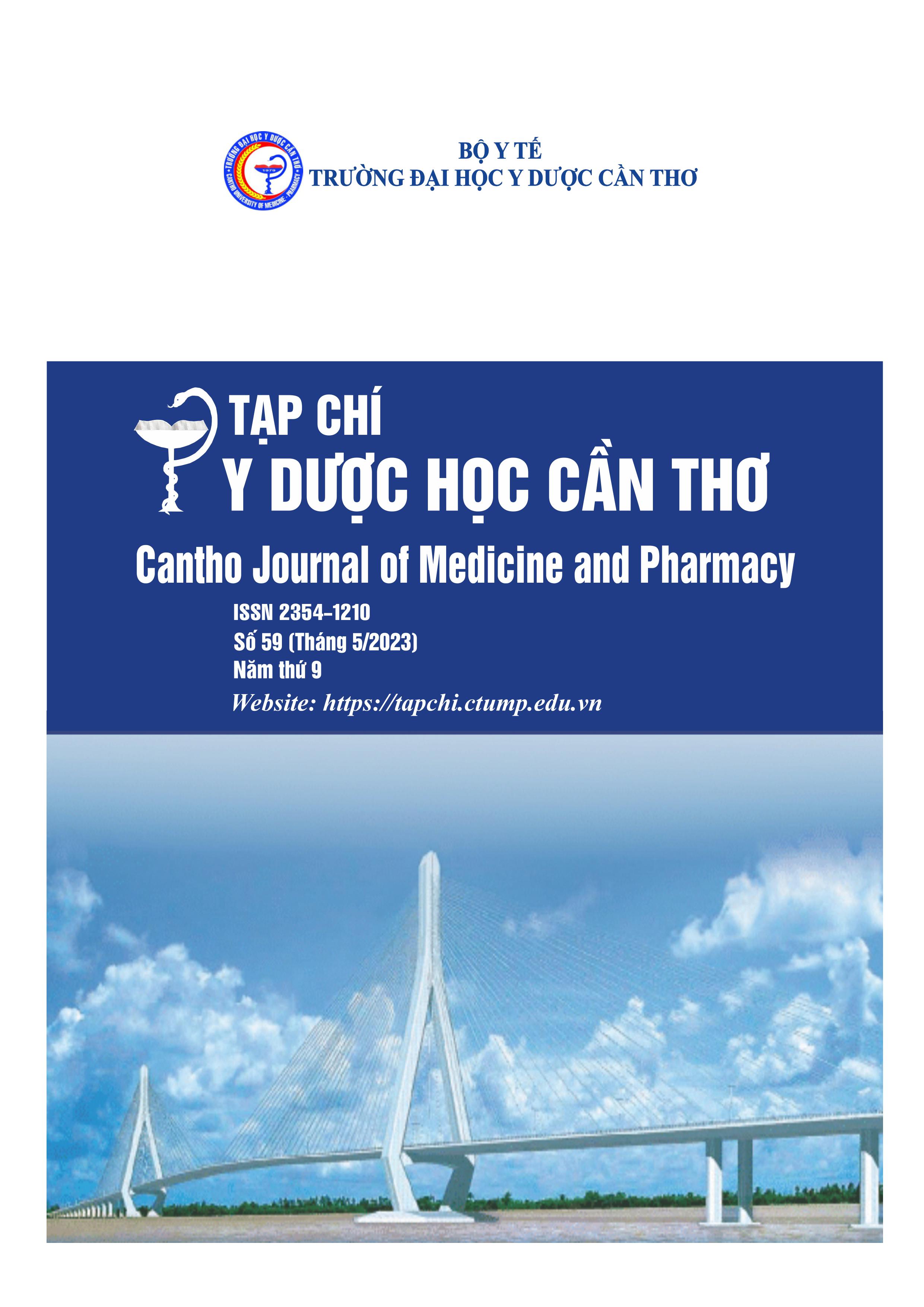INVESTIGATION OF THE EXTRACTION PROCESS AND PRELIMINARY PHYTOCHEMICAL ANALYSIS FROM HENNA LEAVES (LAWSONIA INERMIS L.)
Main Article Content
Abstract
Background: Henna (Lawsonia inermis L.), also called Henna tree is a flowering plant used since antiquity to dye skin, hair, fingernails, leather, and wool for thousands of years. Henna are also used to treat injuries, bleeding, blood stasis, irregular menstrual periods. In addition, Henna are also used to treat boils, scabies and poisonous insect bites. With many uses from Henna, it is necessary to prepare solid extracts from medicinal herbs. Objective: To survey on the extraction process and preliminary phytochemical analysis from Henna leaves. Methods: Observation of the influence of extraction solvent (distilled water, 20% alcohol, 40% alcohol), the ratio of medicinal herbs and solvent (1:12; 1:14; 1:16), extraction time (30 min, 45 min, 60 min), the number of times of extraction (1 time, 2 times, 3 times) and extraction temperature (60°C, 70°C, 80°C) to the higher the extraction yield and preliminary phytochemical analysis of Henna extract. Results: It was determined that the extraction solvent was distilled water, the ratio of medicinal herbs and solvent was 1:12, the extraction time was 45 minutes, the number of times of extraction was 2 times and the extraction temperature was 60oC. Henna leaves extract contained groups of compounds such as anthraquinones, hydrolysed triterpenoids, polyphenols and flavonoides. Conclusions: determined the extraction process and groups of compounds of Henna leaves.
Article Details
Keywords
Henna, extraction, semi-solid extract
References
2. Nguyễn Xuân Cường và cộng sự. Hai hợp chất lignan glycosid phân lập từ lá cây Lá móng (Lawsonia inermis). Tạp chí khoa học, 2009, 9, 96-101.
3. Bộ Y tế. Dược Điển Việt Nam V tập 1. Nhà xuất bản Y học Hà Nội. 2018.
4. Phạm Thanh Kỳ. Dược liệu I, Nhà xuất bản Y học Hà Nội. 2018.
5. Gagandeep Chaudhary, Sandeep Goyal, Priyanka Poonia. Lawsonia inermis Linnaeus: A Phytopharmacological Review. International Journal of Pharmaceutical Sciences and Drug Research. 2010. 2(2), 91-98.
6. Ghodekar Anuradha, Jarande Kajal, Satav Pallavi, Patil Neha and Waghmode Meghmala. In Vitro Activities of Lawsonia inermis L. (Henna) Leaves Extract. International Journal of Pharmacy and Biological Sciences. 2019. 9(3), 256-266. DOI: 10.21276/ijpbs.2019.9.3.37.
7. Abdulganiyu Umar. Effect of Selected Mordants on Fastness Properties of Cotton Fabric Dyed with Henna Leaves Extract. ChemSearch Journal. 2020. 11(1), 126-131.
8. Lizbeth Raju, Shwetha Nambiar, Dominic Augustine, Sowmya S. V., Vanishri C. Haragannavar, Ashok Babu and Roopa S. Rao. Lawsonia inermis (Henna) extract: A possible natural substitute to eosin stain. Journal of interdisciplinary histopathology, 2018, 6(2), 54–60. Doi: 10.5455/jihp.20180726085949.
9. Amin Pasandi Pour, Hassan Farahbakhsh. Lawsonia inermis L. leaves aqueous extract as a natural antioxidant and antibacterial product, Natural Product Research, 2020, 34(23), 33993403. DOI: 10.1080/14786419.2019.1569006.


